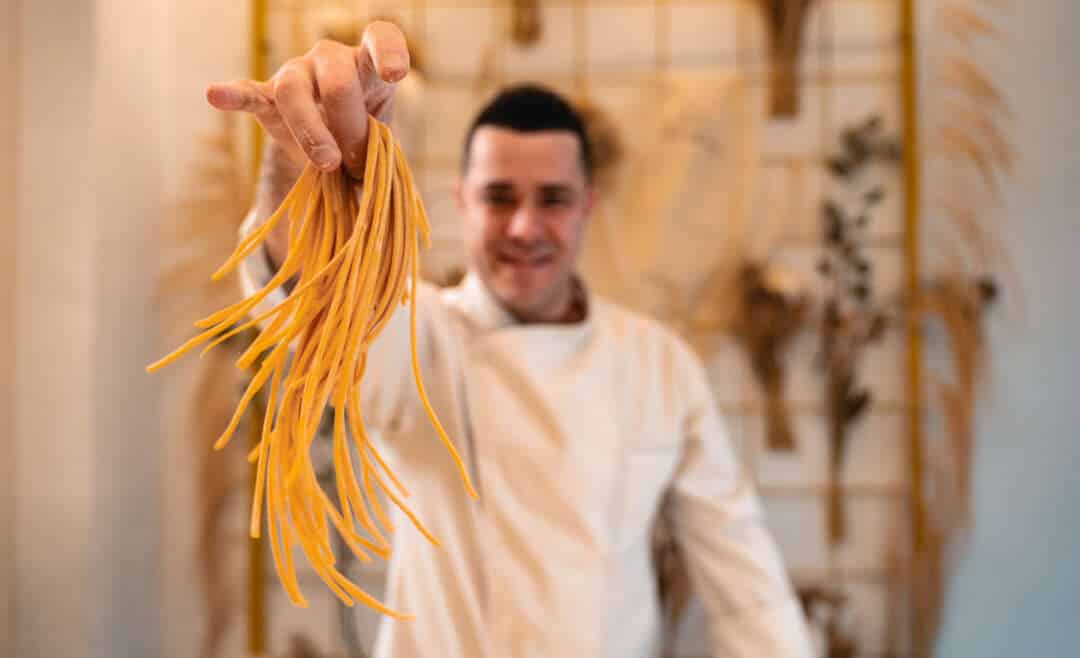Cooking pasta with the heat off: what it is and why it could save you money!
Also called passive cooking, cooking pasta with the heat off it is a technique that is discussed cyclically because it is linked to the possibility of reducing gas or electricity costs.
Cooking pasta with the heat off is an alternative way of cooking pasta.
This is not an innovative method, because it has been talked about and applied for many years (chef Elio Sironi of the Ceresio 7 Pool & Restaurant in Milan experimented with it already in 2010) but it cyclically returns to the headlines because it is linked to topic of domestic gas (or electricity, depending on whether you use stoves or induction plates) savings.
The period of political and economic uncertainty that we are going through, therefore, has led to a discussion once again: does cooking with the heat off, or also called passive cooking, save money on the bill or not?
How to make pasta with the heat off
First of all, let’s explain what this method consists of.
In practice, the operation is very simple:
- Bring the water in the pan to the boil, add the salt and throw in the pasta. The flame is kept on for 3 minutes – in which the boiling will resume – and then it is turned off. Cover it with a lid, leaving the pasta to “cook” for a couple of minutes longer than the time indicated on the package.
- Once the relevant time has passed, the pasta appears “cooked” as we are used to eating it. Then drain and season as desired.
We have put the terms “cook” and “cooked” in quotation marks because they are improper definitions which, however, we all use by convention: it would in fact be more correct to say that the pasta does not cook, but is rehydrated, with a chemical process in which the water penetrates the pasta, is absorbed by the starch granules which swell and make it soft (gelatinisation) and finally firms up again thanks to the coagulation of the gluten.
This chemical-physical transformation is activated at certain temperatures, but is not due to boiling.
That’s right. Although we are used to leaving the fire on throughout cooking, it is not actually necessary: it would be enough to maintain a water temperature of no lower than 80°, just as happens with passive cooking, to allow the gluten to coagulate.
The lower the temperature is compared to the boiling point (100° in normal conditions), the more time this operation takes: for this reason, when cooking without heat, the pasta cooks a minute or two more than those indicated on the package.
The pasta prepared in this way does not lose its organoleptic properties and does not lose its character.
You must use good quality raw materials, but this always applies, given that even with classic cooking, non-first choice pasta overcooks easily and becomes sticky. Important: you must never remove the lid, so that the water temperature drops slowly, without sudden changes. We tried this technique in a steel pan – a material that uses water well as a heat conductor – and we assure you that the temperature does not drop below 80°, so raw pasta is avoided. And there was no need to stir: the spaghetti didn’t stick to each other.
Passive cooking: where are the savings?
If it normally takes 15 minutes to boil the water and then about another 10/15 to cook the pasta, with passive cooking, which eliminates the second step, there is a proven saving in gas use.
What is difficult to calculate is how much this saving can then impact on household expenses. Preparing the paste in this way could prove to be an advantage in the long term: that is, if applied always, perhaps for a year. And combined with other saving practices: for example, choosing condiments for pasta that do not need to be cooked or sautéed in the pan, because otherwise there would be the use of not just one, but two burners.
There is not just one way to cook pasta
Without a doubt, passive cooking shows us that there is not just one way to cook a pasta dish. In addition to the more traditional one, in fact, we can list at least two others that also have to do with saving:
- The first is the one for rehydration in cold water: it is used little, because it requires considerable running-in. The pasta is placed in a bowl of cold water for the time necessary for its rehydration: it could take 20 minutes for a spaghetti, as well as 2 hours for a pacchero, depending on many factors. Once hydrated, it is immersed in boiling salted water and cooked for 3 minutes. If the gas saving here is very evident, so are the impracticality and the danger that the pasta will lose its organoleptic properties if left in the bath for too long.
- The second is one-pot cooking of pasta + seasoning: pour three inches of water into a pan, add the pasta when it boils and add the seasoning immediately afterwards. The pasta will thus cook together with the chosen sauce, enhancing its taste. Also in this case, the method turns out to be good for saving, as little water is consumed and fewer pans get dirty, but at the same time it is not very versatile: a good dish of pasta with meat sauce or pesto, for example, you could never cook like that.
In the end, we can say that cooking with the heat off is an alternative that does not deviate too much from the classic one and that combines practicality and taste with an eye, in the long term, on the wallet.

